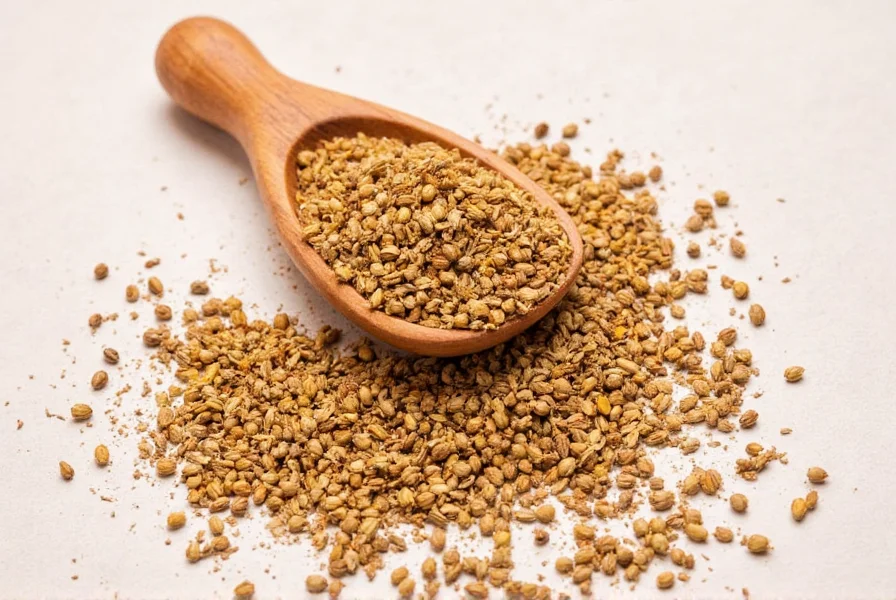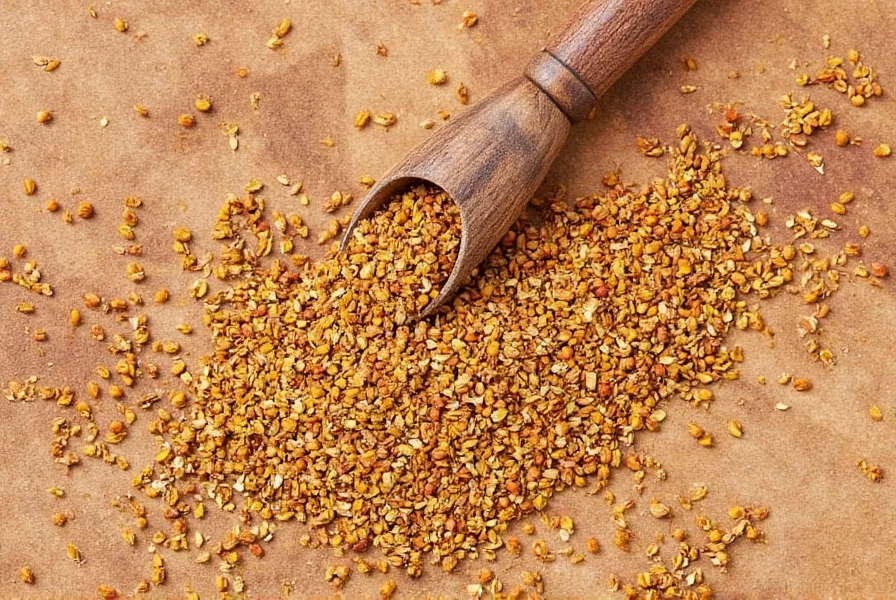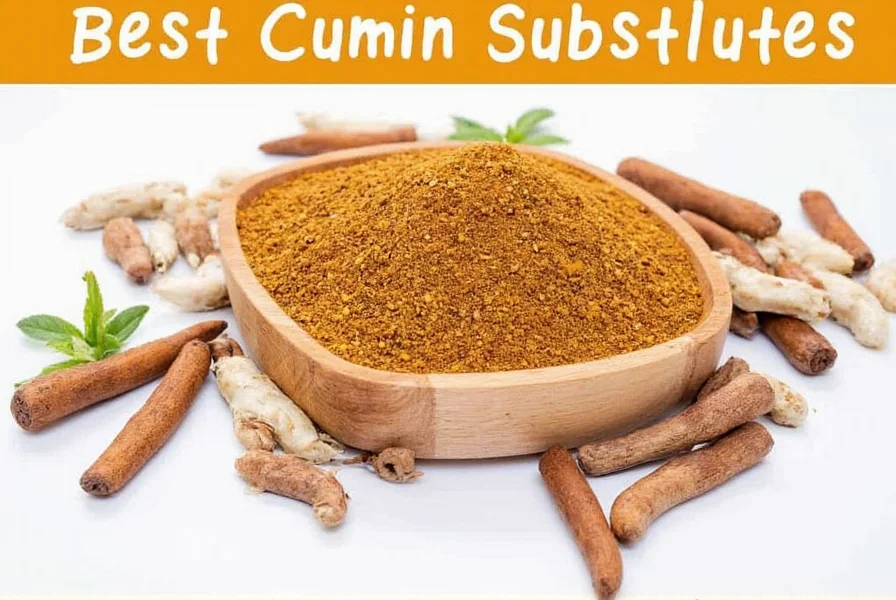The best direct substitutes for cumin are chili powder (use 1.5x the amount), coriander (use equal parts), or a combination of paprika and coriander (1:1 ratio). For Mexican dishes, taco seasoning works well; for Indian recipes, try garam masala. Caraway seeds offer the closest flavor profile but are stronger, so use half the amount.
Running out of cumin mid-recipe can derail your cooking plans, but several accessible alternatives can save your dish. Whether you're preparing tacos, curries, or roasted vegetables, understanding cumin substitutes ensures your flavors stay on track. This guide explores practical replacements backed by culinary science, helping you maintain authentic taste profiles even without this essential spice.
Why Substitute Cumin?
Cumin's distinctive earthy, warm, and slightly citrusy flavor features prominently in global cuisines from Mexican to Indian. When unavailable, these situations commonly prompt substitution needs:
- Unexpected recipe requirements
- Allergies or sensitivities to cumin
- Desire for milder flavor profiles
- Regional availability issues
Top Cumin Substitutes Ranked by Effectiveness
Not all substitutes work equally well across different dishes. The following table compares options based on flavor match, versatility, and ease of use:
| Substitute | Best For | Ratio to Replace Cumin | Flavor Notes |
|---|---|---|---|
| Chili Powder | Mexican dishes, chili, stews | 1.5 tsp chili powder = 1 tsp cumin | Milder, includes garlic/onion notes |
| Coriander | Curries, Middle Eastern dishes | 1:1 replacement | Citrusy, less earthy than cumin |
| Garam Masala | Indian recipes | 1.5 tsp garam masala = 1 tsp cumin | Complex spice blend, use sparingly |
| Caraway Seeds | Central European dishes | 0.5 tsp caraway = 1 tsp cumin | Stronger, similar earthy notes |
| Taco Seasoning | Tacos, fajitas, Tex-Mex | 1.5 tbsp seasoning = 1 tsp cumin | Contains cumin plus complementary spices |
Detailed Analysis of Each Substitute
Chili Powder: The Most Accessible Alternative
Chili powder typically contains cumin as a primary ingredient along with garlic powder, onion powder, and paprika. This makes it the most practical cumin substitute for American and Mexican dishes. When substituting, increase the amount by 50% since cumin isn't the only component. For a more accurate flavor match in chili recipes, combine chili powder with a pinch of oregano.

Coriander: The Closest Single-Spice Replacement
Ground coriander shares cumin's citrusy notes but lacks the earthy depth. It works particularly well in Indian and Middle Eastern dishes where both spices often appear together. Use equal parts coriander to replace cumin, then enhance with a pinch of smoked paprika to approximate cumin's warmth. This combination works especially well in lentil dishes and vegetable curries.
Garam Masala: For Authentic Indian Cuisine
When preparing Indian recipes that call for cumin, garam masala provides the most contextually appropriate substitute. This complex spice blend typically contains cumin along with cardamom, cinnamon, and cloves. Use 50% more garam masala than the cumin amount specified, but reduce other spices in the recipe to prevent overpowering flavors. This substitution works best in finished dishes rather than as a dry rub.
Choosing the Right Substitute for Your Recipe
The ideal cumin replacement depends on your specific dish and desired flavor profile:
- Mexican recipes: Use chili powder or taco seasoning for authentic flavor
- Indian curries: Opt for garam masala or coriander with turmeric
- Middle Eastern dishes: Try coriander with a pinch of sumac
- Vegetable roasts: Paprika and coriander create a balanced alternative
Consider the dish's cooking time when substituting. For long-simmered recipes like stews, stronger substitutes like caraway work well as flavors mellow over time. For quick dishes like tacos, milder options like chili powder maintain balance.
Common Substitution Mistakes to Avoid
Many home cooks make these errors when replacing cumin:
- Using equal amounts of stronger spices like caraway (results in overpowering flavor)
- Substituting curry powder in Mexican dishes (creates flavor confusion)
- Adding multiple substitutes simultaneously (creates muddy flavors)
- Not adjusting salt levels when using seasoned blends
When experimenting with substitutions, add replacement spices gradually, tasting as you go. Remember that dried spices intensify when cooked, so wait until the final stages of cooking to make final adjustments.
Creating Your Own Cumin Substitute Blend
For the most control over flavor, create a custom blend using pantry staples:
- Mix 2 parts coriander with 1 part smoked paprika
- Add a pinch of cayenne for heat (optional)
- Include 1/4 part ground fennel for complexity
- Store in an airtight container for up to 2 weeks
This blend works particularly well in bean dishes and vegetable preparations. For meat recipes, add a small amount of garlic powder to enhance savory notes.

When Substitution Isn't Enough
Certain recipes rely so heavily on cumin's unique flavor that substitutes fall short. These include:
- Authentic adobo seasoning
- Traditional berbere spice mix
- Specific regional mole sauces
In these cases, consider modifying the entire spice profile rather than seeking a direct substitute. For example, in adobo recipes, increase oregano and garlic while adding a touch of citrus zest to maintain complexity.
Frequently Asked Questions
Can I use paprika instead of cumin?
Yes, but with modifications. Paprika provides color and mild heat but lacks cumin's earthiness. For best results, combine equal parts paprika and coriander. Use this blend in roasted vegetable dishes or tomato-based sauces where cumin's intensity might overwhelm other flavors.
What's the difference between cumin and caraway?
While both belong to the Apiaceae family, cumin has a warmer, earthier profile with citrus notes, whereas caraway is more pungent with distinct licorice undertones. Caraway is stronger, so use half the amount when substituting for cumin. They work well together in some Central European dishes but aren't direct replacements.
Can I substitute cumin seeds for ground cumin?
Yes, with adjustments. Use 1.5 times the amount of cumin seeds compared to ground cumin, as seeds have more concentrated flavor. Toast the seeds lightly before use to release oils, then grind them for even distribution. This works particularly well in slow-cooked dishes where seeds have time to soften.
Which cumin substitute works best for vegetarians?
Coriander combined with smoked paprika creates the most versatile vegetarian-friendly substitute. This combination mimics cumin's earthiness without relying on meat-based flavor enhancers. For vegan dishes, add a pinch of nutritional yeast to boost umami notes that cumin typically provides.
How do I adjust recipes when substituting cumin in baking?
In baked goods like spiced breads or crackers, use half the amount of your substitute compared to cumin. Baking concentrates flavors, so start with less and adjust in subsequent batches. Coriander works best for sweet applications, while caraway suits savory baked goods. Always mix dry ingredients thoroughly to prevent flavor pockets.











 浙公网安备
33010002000092号
浙公网安备
33010002000092号 浙B2-20120091-4
浙B2-20120091-4